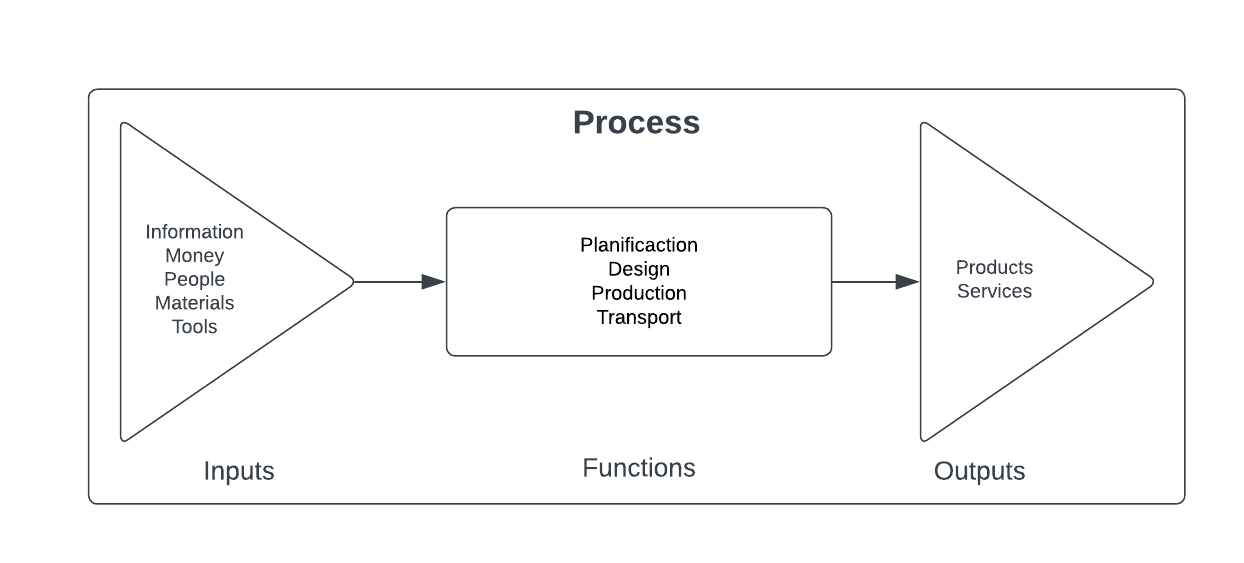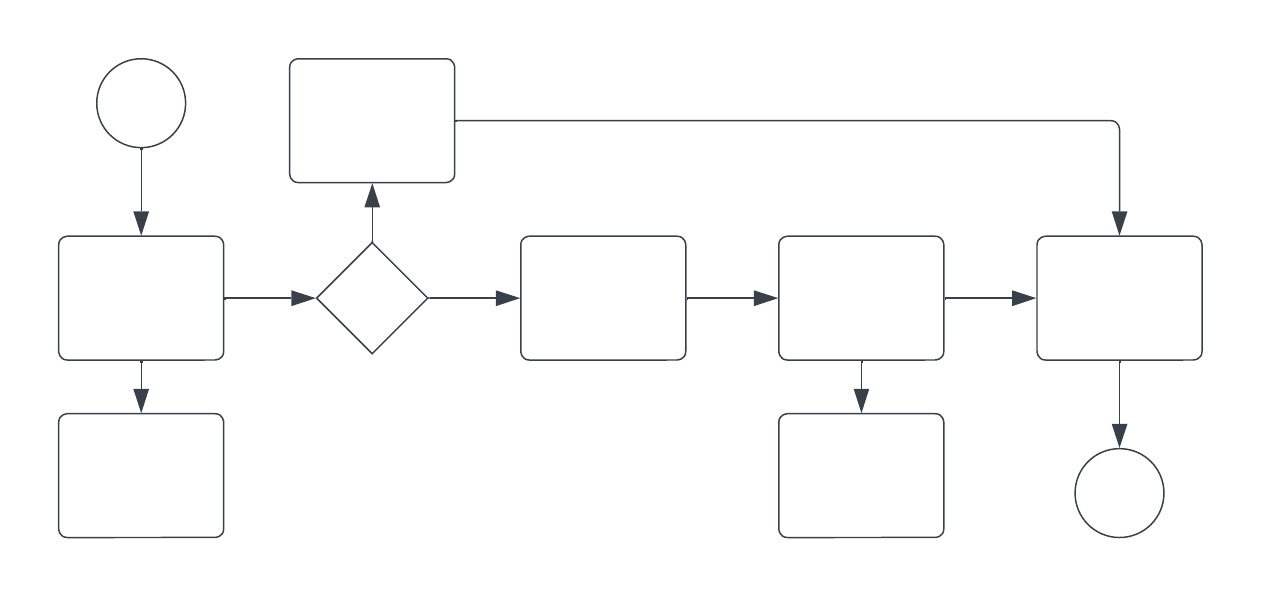Key benefits of defining your processes
When we talk about functions, procedures, and business processes, we notice an important difference: the order. A function can be a process (such as...
Companies are usually structured by function, which is not a bad thing at all. Still, if you don't have process management, it will be harder to leverage the potential of your resources and easier to stumble. But what is a function, how is it different from a process, and how does this affect my business and the customer experience? This blog will cover these topics and mention a key tool to take the first step toward process management.

What is a function?
Functions go through a life cycle. They are born as tasks that need to be fulfilled (buy, sell, transport, serve a customer, among others), grow as they are executed, and mature through the development of good practices until, at a certain point, they become verticalized. This means that departments are created with specific roles within a hierarchy whose objectives are to ensure the execution and fulfillment of these tasks.
Vertical structures provide order, encourage specialization in one area, and promote escalation through roles. However, the real problem occurs when this is the only way a business works. In this structure, the interaction between departments is not organic, and decision-making is slow, jeopardizing significant opportunities and leaving customers dissatisfied.

What is a process?
A process is a set of activities executed sequentially to convert inputs into products or services that some user will receive.
As an example, a logistic process of order management can be seen in this way: a salesperson generates an order fulfillment, the warehouse managers consolidate the products on a pallet, pack them and take them to the unloading area where the order is dispatched, then, a carrier or a subcontracted logistics operator takes and delivers the products to the customer.
This is a horizontal scheme because each of these activities is produced by a person with a different function, where decision-making must be agile and communication assertive so that the product arrives on time and does not compromise the quality of service or the customer experience.
In a horizontal structure, each team is responsible for its results and therefore does not focus on functions but processes. It also reduces the number of hierarchical roles, streamlining many of the tasks; however, this does not mean there is no control. On the contrary, defining a proper process allows identifying everything that surrounds its environment, making it easier for employees to understand how to properly develop the tasks and giving visibility to managers about what is happening at all times.

Why use process management?
Forrester Consulting published a study in January 2022, surveying directors, managers, and heads of more than 800 companies in the United States, Japan, Germany, the United Kingdom, and the Nordic countries, covering industries such as retail, manufacturing, technology, consumer services, and energy.
Among their findings, 83% of the company's areas have interconnected processes, meaning that they depend on other departments and that their work is rarely isolated in a single business unit. This, coupled with the number of communication channels available and digital transformation, makes their processes even more complex.
In addition, only 27% of the companies surveyed used business process management or process mapping tools, making process mining and business intelligence impossible. This has two serious consequences, on the one hand, there is no real visibility of their processes, and on the other hand, they cannot use real-time data for decision making. How many of your company's actions today are based on data generated less than a day ago? For these and many other reasons, having a horizontal alignment is essential if you want to survive as a business.

How does it affect the customer experience?
The complexity of processes, the lack of visibility over them, and the inability to use real-time data make it difficult to create goals since there is no objective knowledge to make critical decisions. These three problems prevent businesses from effectiveness and efficiency, essential quality components. How can you propose realistic goals if you don't even know the state of your processes yourself?
And are your customers aware of this? The truth is that they are. Their Customer Journey is also horizontal. Their experience is not based on the individual functions of each of their moments of truth but rather an overall perception of the sum of all of them. In other words, your experience does not depend solely on marketers performing their role but also includes sales consultants, service managers, and the product's use or the service's receipt. It's their buying process, and their experience will only be as good as the weakest link in your business.

Why do businesses fail?
Some of the most severe and common mistakes I have encountered are the absence of owners or managers, not having clear objectives, not understanding the suppliers and customers of each process, and not linking them to any strategy. This leads to significant business problems: high organizational costs, inefficiency, reprocesses, and lost opportunities.
Many companies do not have process diagrams. For auditing purposes, it is common to see manuals with systematics or procedures in their management systems, including process sheets. I do not want this to be misunderstood. All these tools are handy; it is a pity that they accumulated dust stored in files in the past and that today they only occupy space inside a memory.
I think the problem is that they are difficult to read because they are long documents written in prose or because the diagrams they have are designed almost exclusively for engineers and to please top management. The truth is that it is useless to have a mapped process that is not followed but to be able to control, you must first be able to measure.

Where to start the race to achieve process management?
Nowadays, some tools facilitate process management. Just type BPM in the search engine. Even some Customer Relationship Management (CRM) tools allow you to create workflows, which you can use for this purpose and have greater visibility and control. However, they are more useful for sales, marketing, and service processes than operational ones. Additionally, you can also create automated workflows in them to reduce workloads and increase productivity.
Still, starting by buying automation software is a mistake if you don't have your processes well defined and mapped out. So this is the first step, define and diagram. After these hurdles, you should optimize and finally automate.
Personally, for this, I have taken a liking to the SIPOC tool. For a long time, I used tools to design the process flow; however, the flow charts solved none of the problems I mentioned above because you only had a diagram of the sequence of activities from start to finish. Of course, this is still necessary since it simplifies the visualization, and other industrial engineering tools give more detailed information. They can help you to design a process, but they are still not very user-friendly tools.

The user experience is essential; an exemplary process diagram can help employees correctly execute their functions and for software implementers to understand what they are expected to design in a system. The clearer a process is, the easier it is to follow, which adds to the customer experience.
What is SIPOC?
Its initials are Supplier, Inputs, Process, Outputs, and Customer, and it contains most of the information needed to define a process correctly. They can perfectly solve some of the problems I mentioned above.
The SIPOC will help you have a diagram of your processes, which also preserves the details in written or visual forms (as you prefer). Still, you can also work on giving it a user-friendly design to make it easier to understand.

Organizations can fail for many reasons, but one of the worst mistakes is not having your processes defined and relying solely on everyone to do their jobs well. Identifying your processes will help you have better visibility and control, increase your employees' productivity, reduce costs and improve customer satisfaction, to mention some of the benefits. Tools such as SIPOC or BPM will make it easier to diagram your processes, which is the first step to improving your understanding of your business and moving towards process management.

When we talk about functions, procedures, and business processes, we notice an important difference: the order. A function can be a process (such as...

As in the retail or manufacturing industry, the financial sector does not escape having a high volume of daily transactions. Each transaction is data...

According to Gartner, when deciding where to shop, 64% of people consider the quality of the customer experience more important than price.